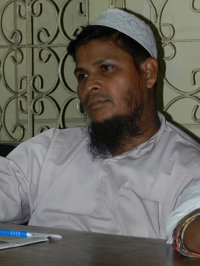Bangladesh: Battleground for Labor Organization
As Dr. Jeffrey Sachs wrote in his book “The End of Poverty”,
while a country such as Bangladesh may be on the bottom rungs of the global
economic ladder, the fact that material goods exports continue to rise, and
employment numbers continue to rise, is a very hopeful indicator of future
economic prosperity. It has been seven years since Dr. Sachs published “The End
of Poverty”, but that image of Bangladesh is even more profound today.
Bangladesh is currently the second largest exporter of apparel, behind only
China, and if the pattern continues Bangladesh may very well see itself
becoming significantly more prosperous in the coming decades.
Dr. Sachs is not the only one cognizant of this increased
economic success however. Inevitably, the rise in production and increasing
employment numbers has seen a parallel increase in the desire for organized
labor. Tensions between the employers and the roughly 3.6 million low-skilled
workers continue to flare as abysmal wages, poor working conditions and
non-existent support regarding company benefits are gradually being seen by
workers as unacceptable.
Mr. Islam
It is not just the factory owners that are the problem
though. The Bangladeshi government has for years walked the tightrope between
offering sympathy for the workers, many of whom simply cannot live off the
wages they bring home, and offering support for the factory owners, whose
operations brought in $18 billion in export sales in 2011 alone. After raising the
minimum wage in 2010, a defining step in the right direction for improved labor
conditions, the Bangladeshi government made a statement saying they expected
labor protests to stop for good, effectively destroying any good will the
minimum wage increase may have been perceived as.
One thing stands out as fundamentally lacking in this
scenario: constructive dialogue between the government and factory owners, and
the workers themselves. On one hand, organized protest can be a powerful and
oftentimes effective method for changing policy or influencing decision-making.
Regarding labor relations, it is important to protest unfair wages or poor
conditions and can be the most aggressive and successful way of changing that
quickly. However, protesting is like many other aggressive tactics, and if the
Bangladeshi workers continue to protest despite the wage increase instead of
trying a more diplomatic approach to continued change, they will get nowhere
with a government that will not respond to pressure and does not want to hurt
the apparel industry with more wage increases. The two sides need to approach
the disagreement peacefully and with respect for the other side’s opinions,
engaging one another in dialogue that produces better compromises both can be
happy with – until then, violence will only escalate, workers will remain at
risk for tragedies such as what occurred recently in Pakistan, and the
government will bear the burdens of a massive disgruntled workforce.

No comments:
Post a Comment